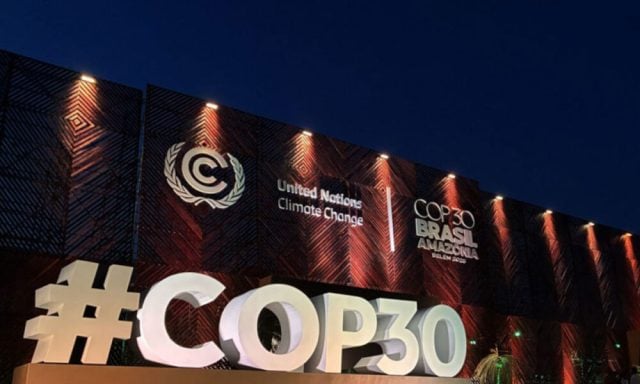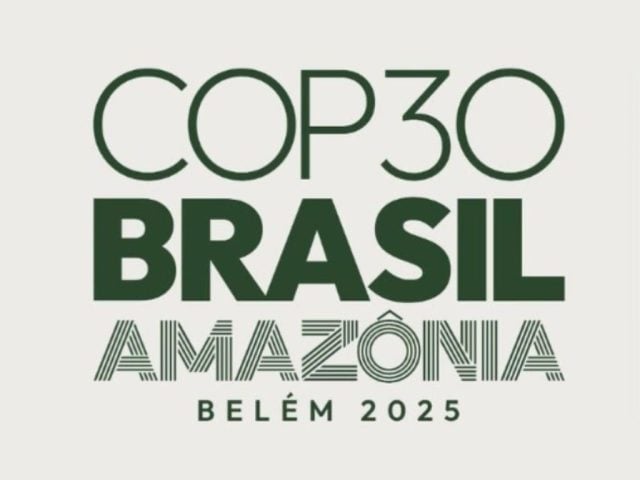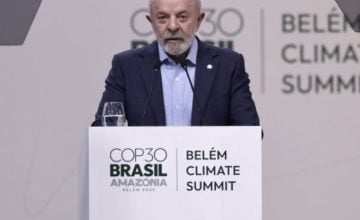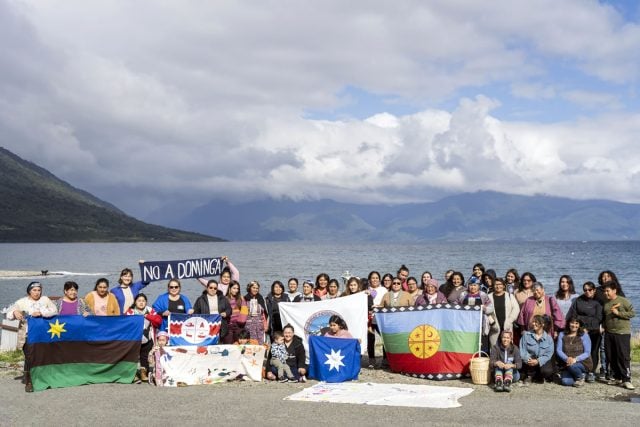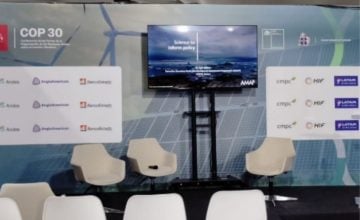Original article: COP30: Una crónica desde Belém
By María Fernanda Quiroz, Journalist
I woke up at 6:30 AM after having a nightmare about my parents, both of whom have passed away. In the dream, my father began developing cataracts in his left eye, while I tried to convince my mother to put on makeup and share a room with him in a colonial house in Santiago. I woke up crying.
None of this may seem relevant (or maybe it is, in terms of unconscious stress) considering that just hours later, I would be traveling to Brazil, specifically to the city of Belém, the gateway to the Amazon and host of COP30.
The United Nations Climate Change Conference (COP) is set to be one of the most significant global events for discussing and agreeing on terms regarding climate action among nations. The aim is to prevent global warming from escalating further (although evidence suggests otherwise), thereby maintaining the conditions of vulnerability and inequality faced by those who are least equipped to cope with climate fluctuations.
I arrived in Belém around 1 AM on Sunday, November 9, and from Monday, November 10, to Thursday, November 14, my experience turned into a pilgrimage within the Hangar Convention Center, covering an area of approximately 24,000 square meters. The entire venue was tented, creating a somewhat stifling environment where the passage of time was nearly imperceptible. Additionally, there was a heavy presence of security, with many people accompanied by their escorts, including California Governor Gavin Newsom, undoubtedly one of the highlights of this COP.
In the early days, there were no differentiated waste containers for recycling, leading to waste disposal challenges. Power outages struck a couple of larger pavilions, preventing some events from taking place. Furthermore, food prices were exorbitant, with a small coffee costing around 9,000 Chilean pesos, a single slice of pizza priced at 10,000, and a regular lunch set at 20,000. I heard these are standard prices for COPs, but they remain high nonetheless.
Everything was paid for using a specially printed prepaid card for COP attendees, which had to be loaded at “Caixa.” If you didn’t use the balance, there was no option to recover the money, so the best workaround was to give it to someone else still attending. That’s exactly what I did with the lamngen Islena Antumalen and her friends, with whom I enjoyed a delightful moment near the Basilica of Nossa Senhora de Nazaré.
Beyond the professional experience of covering such a significant global event, capturing photos of Michelle Bachelet, and exploring a slice of this port city, the best part of attending COP30 was meeting new people and discovering new music (I highly recommend Madame Gandhi). It also became clear that climate discussions involve a range of stakeholders—not just good intentions.
In fact, the event, which concluded on Saturday, November 21, resulted in minimal achievements, highlighting the huge debt to intensify the phase-out of fossil fuels. I asked Google Gemini about the carbon footprint of this immense event, which welcomed over 50,000 delegates from nearly 200 countries, where air travel was almost certainly the primary contributor. The response indicated that there is no public and definitive figure for the equivalent tons of CO2 emitted during the event.
Setting aside the inconsistency of addressing the climate crisis while generating waste and an uncalculated carbon footprint, a significant takeaway from COP30 was the visibility and representation of Amazonian communities (who managed to assert their presence). It emphasized the culture of ancestral peoples and their intrinsic role in preserving biodiversity. Personally, this COP ignited a genuine interest in indigenous cultures, further reinforced during my visit to an exhibition by photographer Araquém Alcântara at the Estação das Docas.
At this point, critiquing things may seem tedious, so I’ll pose it as a question. The entire COP30 proceedings were conducted in English. Indeed, I had to moderate in this language myself, but why did such a significant event held in South America not capitalize on valuing our languages and dialects more?
I missed South American leadership on these details, such as fostering a deeper connection with the environment, questioning our production model, or attending events held outside the venue and organized by civil society.
In conclusion, COP is primarily about lobbying, networking, meetings, and events that cater to the interests of the organizers. The language barrier and high costs make COP feel elitist, and over time, it risks losing its essential purpose.
By María Fernanda Quiroz, Journalist.-
